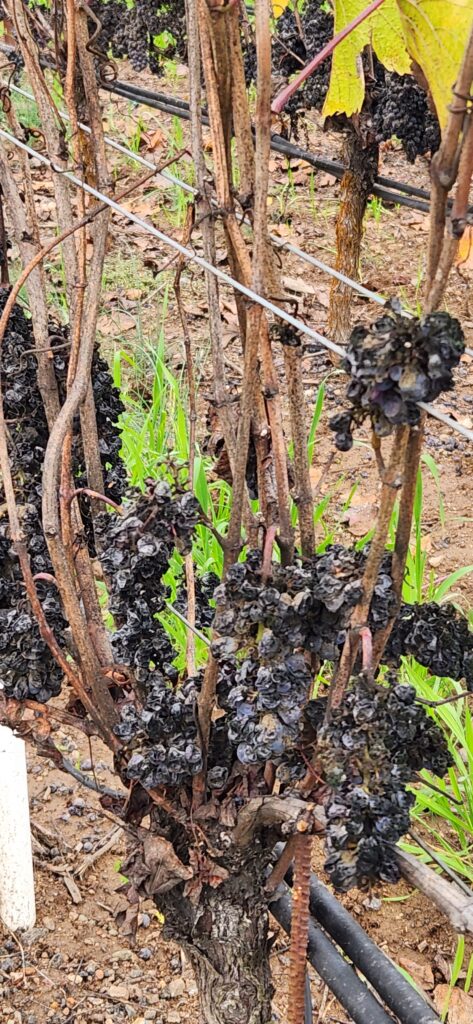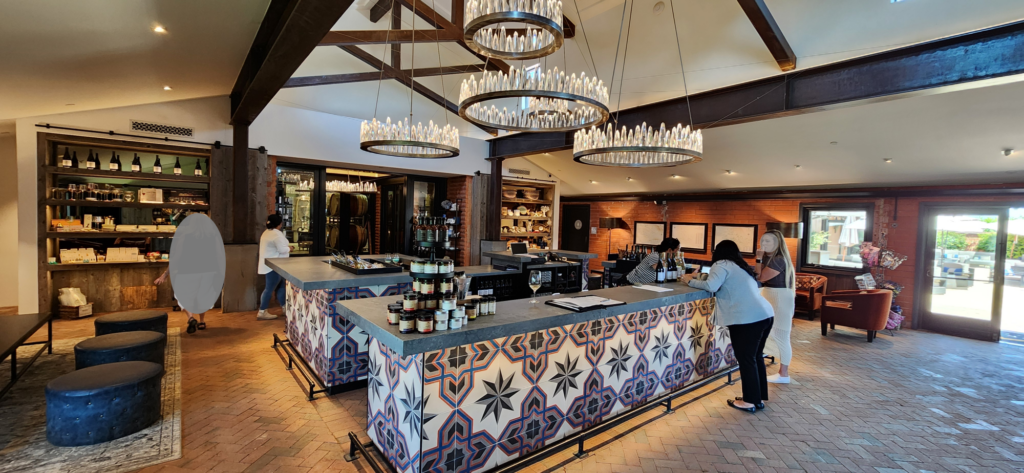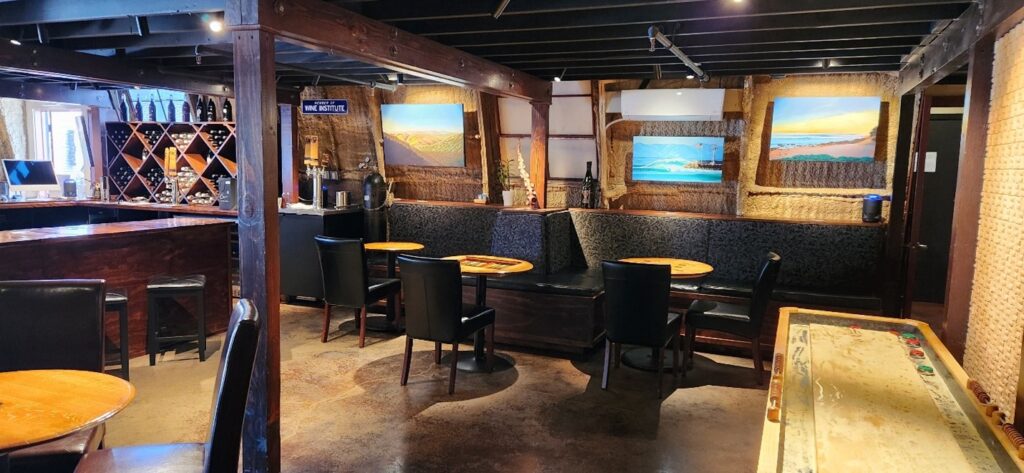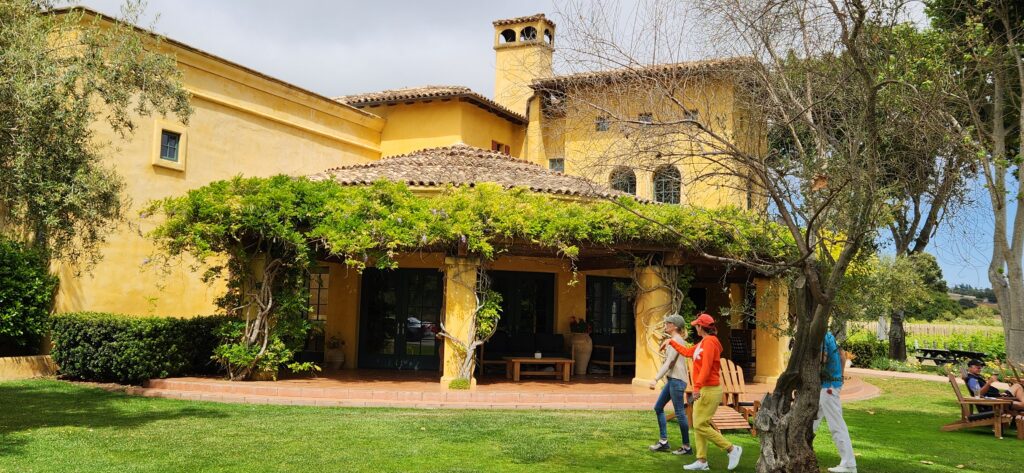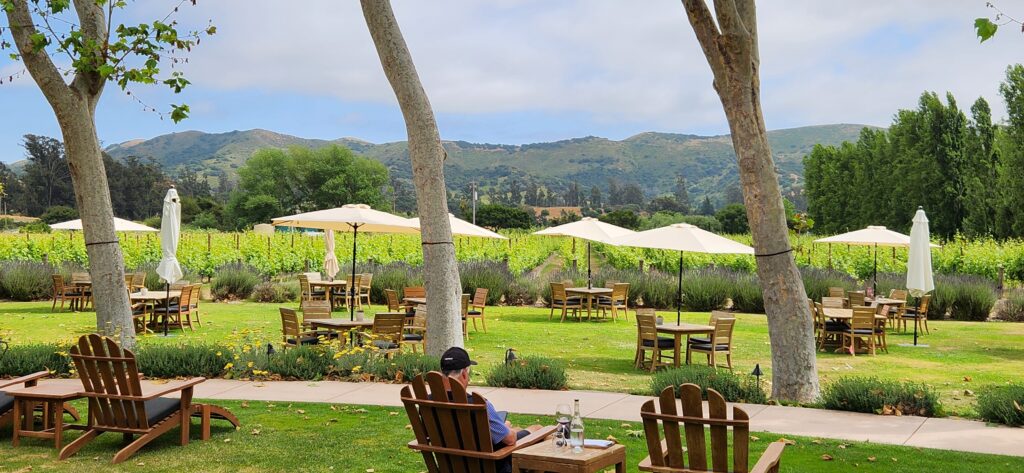As these things often do, our interest in Benovia began in a restaurant. We wanted a Pinot Noir to go with dinner at Willi’s Seafood in Healdsburg, California. Our server suggested Benovia, saying it was the only wine that had been on their list since the restaurant opened. We were impressed by the wine and decided to visit their winery in the Russian River AVA the next day. We did call in advance, since their website says tastings are by reservation only. We were told they could squeeze us in.
The Benovia “ranch”.
The road to Benovia is not as picturesque as in other parts of Russian River, more industrial than rustic. As we approached the winery (in November) through the vineyard, we noticed that there was still fruit on the vines. Or more accurately, there was fruit rotting on the vines. Evidently the sales of lesser-known premium wine are depressed. The owners decided it was smarter to feed grapes to the birds than to make wine that wouldn’t be sold. To say the least, this is a sad trend.
The interior of the Benovia winery, with our server named Izzy.
Beyond the vineyard, we encountered a large factory-like building and then, just beyond it, a rambling ranch house. On entering, we found an empty tasting room, with one group of people sitting on the patio. Squeeze us in, indeed! Nonetheless, we were welcomed warmly and were seated in front of a fireplace (no fire) in a living room setting. In fact, that typified our visit to Benovia; it’s like visiting friends with a nice house and good taste in wine.
Benovia is a relatively recent arrival in the world of wine, having opened in 2005. The owners purchased the vineyard around the winery, as well as several other Russian River terrains. As a result, most of their wines are estate made, which we always consider to be a plus. Of course, since they’re situated in an area famed for Pinot Noir and Chardonnay, that’s what they make. They also sell a few wines made from other grapes, which we didn’t taste.
The wines served at the tasting were a good representation of Benovia’s wines. In many tastings, visitors are offered the bottom of the winery’s list. A tasting at Benovia spans their price points. The wines served are a mix of single vineyard Pinot Noir and Chardonnay, from both Russian River and Sonoma Coast. Power Tasting doesn’t review wine, but we can say that our favorite was the Pinot Noir from the Martaella vineyard, which was the one we drove through to get to the winery.
Benovia is a small winery, producing only 4,000 cases, an amount that is being reduced due to market pressures, as described. We hope they survive the slump, because we enjoyed the tasting experience there and we also like the wines we tasted, including the one that we had at dinner.
Many Sonoma County wineries are the result of generations of farmers who grew grapes for making wine. Benovia isn’t like that. It’s more 21st century, a winery opened by people who made their money elsewhere. That’s not necessarily bad and if they are committed to quality winemaking, we’d like to see them encouraged.


